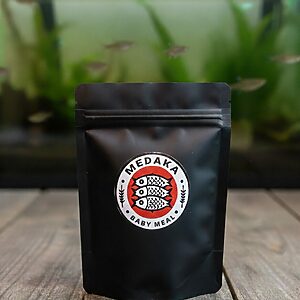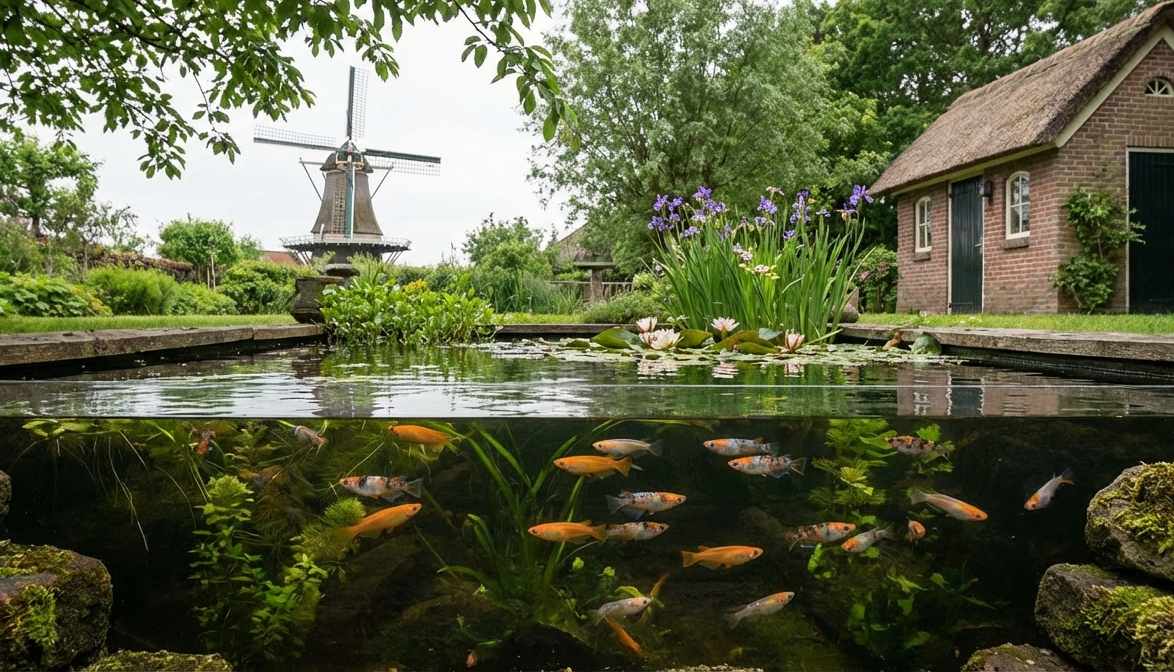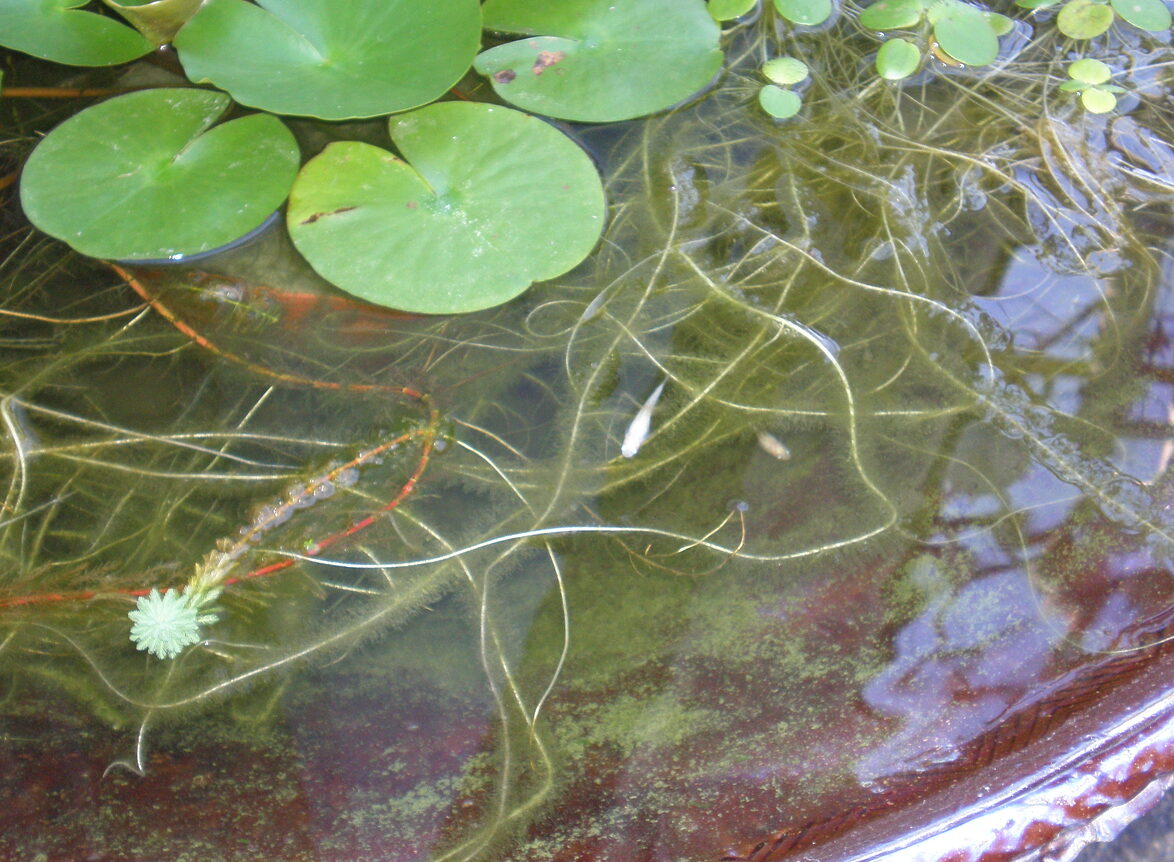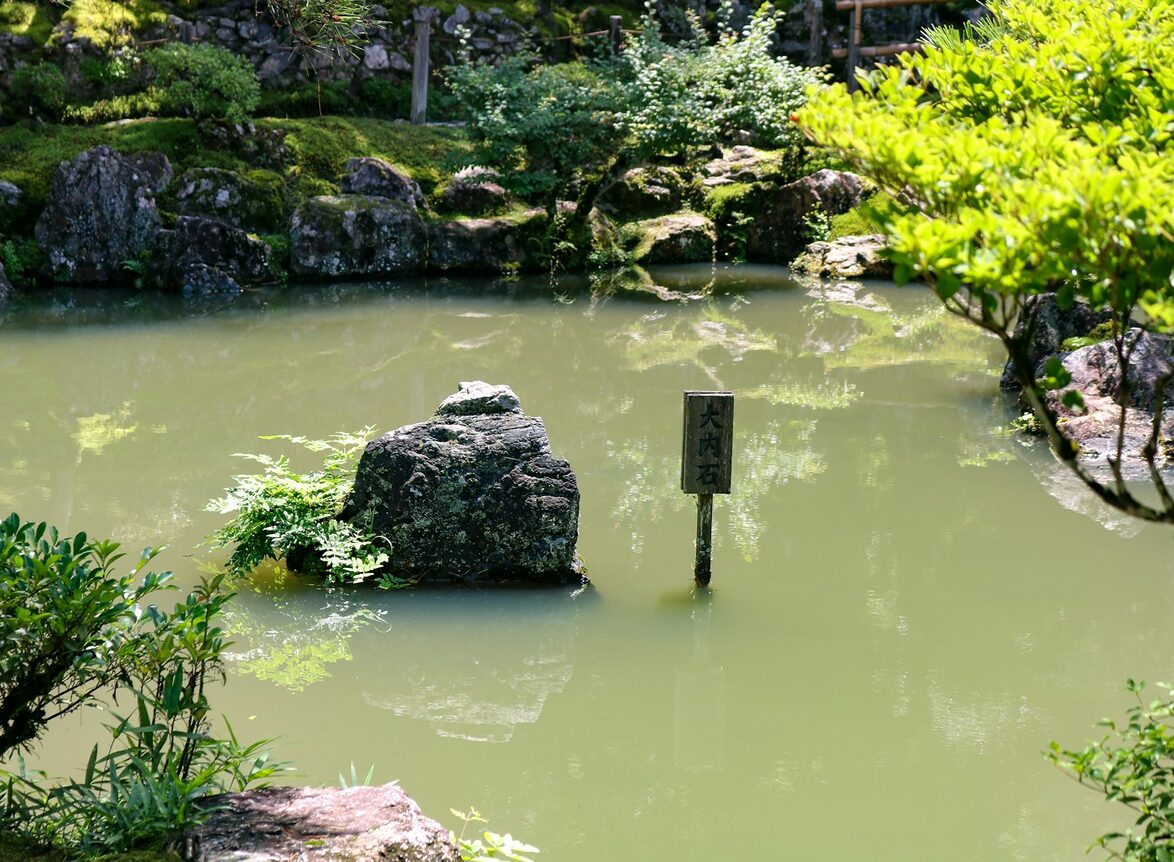
Medaka or Goldfish?
A comparison for pond enthusiasts
If you are looking for the perfect fish for your pond, you will soon come across two popular types: the medaka (Japanese rice fish) and the classic goldfish. Both fish have their own charm and unique characteristics, but which one is best for your situation? In this article, we'll delve into the key differences between these two special pond fish. Whether you're a seasoned medaka enthusiast or still unsure about which one to choose, after reading this article, you'll know exactly what to expect.
Medaka vs. Goldfish: What are the differences?
Size and appearance
The most striking difference between medaka and goldfish is their size. An adult medaka grows to only 3 to 4 centimeters long, while a goldfish can easily reach 15 to 30 centimeters, depending on the variety. These compact dimensions make the medaka ideal for smaller ponds and even large aquariums. Goldfish are, of course, iconic in appearance with their shimmering orange, red, or white colors, but medakas certainly hold their own. Medakas are available in beautiful varieties such as black and white (panda), metallic blue, and the popular orange-red hues.
Lifespan and temperature tolerance
A healthy goldfish can live 10 to 20 years with proper care, some even longer. Medakas have a shorter lifespan of about 2 to 4 years, although they can live longer in optimal conditions. Both species are surprisingly hardy when it comes to temperature. Goldfish are known for their ability to survive under ice, provided the pond is deep enough. However, medakas are true champions of temperature tolerance: they can survive in water temperatures ranging from 2°C to as high as 40°C! This makes them particularly well-suited to the Dutch climate, both in harsh winters and warm summers.
Behavior and social structure
Goldfish are social animals that like to swim in groups and search the bottom for food. However, they can become territorial during spawning season and tend to eat or dig up plants. Medakas, on the other hand, are peaceful schooling fish that are constantly on the move and like to swim at the water's surface. Their swimming behavior is lively and playful, making them fascinating to watch. A key difference is that medakas are much less destructive to aquatic plants than goldfish, allowing your pond to maintain a more natural appearance. Furthermore, medakas are excellent mosquito larvae eaters, making them especially beneficial for your pond!
Which fish is best suited to your pond?
Pond size and capacity
The size of your pond is probably the most important factor when choosing between medaka and goldfish. For goldfish, you need at least 1000 liters of water, with about 200-300 liters per fish to keep them healthy. A pond that's too small leads to stressed, unhealthy fish and water problems. Medakas are much more adaptable: you can start with a small pond of 100-200 liters, and even smaller sizes can be suitable for a small group. This makes medakas perfect for balconies, small city gardens, or as a supplement to a larger pond. Keep in mind that medakas thrive in groups of at least six.
Maintenance and care
Goudvissen produceren relatief veel afval, wat betekent dat je een goed filtersysteem nodig hebt en regelmatig water moet verversen. Ze hebben ook de neiging om modder op te woelen, waardoor het water troebel kan worden. Medaka’s zijn in dit opzicht veel eenvoudiger: ze produceren minimaal afval en hebben geen zware filterinstallatie nodig. Een eenvoudige sponsfilter of zelfs goed beplante vijver zonder filter kan al voldoende zijn voor een groep medaka’s. Wat nutrition betreft eten beide soorten graag hoogwaardig fish food, but medakas have smaller mouths and thus have fine-grained feed nodig. Een praktische tip: medaka’s zijn gulzige eters van muggenlarven, waardoor je in de summer minder last hebt van muggen!
Aesthetics and personal preference
Ultimately, the choice often comes down to what you find visually appealing and what suits your lifestyle. Goldfish are statement fish: large, striking, and often the focal point of a pond. They swim more calmly and are easily visible, even from a distance. Medakas offer a more subtle, natural beauty. Their small size and lively swimming behavior invite close observation, and their diverse color patterns are breathtaking upon closer inspection. For enthusiasts of Japanese gardens or natural ponds, medakas are often preferred, as they create the authentic feel of a rice paddy pond. Moreover, medakas allow you to experiment more easily with different color varieties without overcrowding your pond.
Both medaka and goldfish are beautiful additions to your pond, but they have distinctly different requirements and characteristics. Goldfish are perfect if you have a spacious pond and enjoy large, eye-catching fish that will last for years. Medaka, on the other hand, are ideal for smaller spaces, easier to care for, and offer a unique, natural charm that perfectly complements the Japanese aesthetic. For many medaka enthusiasts, the choice is already made: these small but fascinating ricefish offer an unparalleled combination of beauty, resilience, and ease of care. Whichever fish you choose, make sure your pond is properly prepared and that you understand your fish's needs. Then you can enjoy your own aquatic paradise for years to come!







Leave a Comment
Your email address will not be published. Required fields are marked *